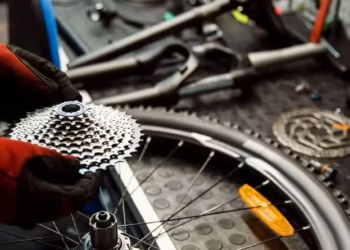Pressure vessels are hazardous and need to be made under strict guidelines. So, the materials used in making it need to be very compact to avoid leakages. Unfortunately, most materials used might not have the structural strength and cannot resist corrosion. Sometimes due to low strength, it might need the use of costly thick sections to improve compactness. The solution is adding a layer of corrosion-resistant material of the right thickness on the surface of the equipment. You can do this using structurally strong materials like carbon steel. When such a combination of two layers of varying material happens, it’s known as cladding or lining.
A brief on cladding in Pressure vessels:
Most pressure vessel manufacturers make them with well-deposited stainless-steel cladding. They do this to form a layer to help resist corrosion. In addition, it prevents the primary coolant medium from being contaminated by active corrosion products from the underlying base metal.
Ways the interaction of austenitic and ferritic material can be considered:
● If they ignore cladding and the vessel is assumed to be homogeneous
● When there’s a consideration in the variation of thermal conductivity between the base metal and cladding
● If there’s consideration of thermal expansion coefficient is considered
The cladding process:
Most pressure vessel manufacturers in India use cladding on the inner surface. It’s applied using automatic Electroslag Strip Cladding ESSC with varying-sized strip electrodes. The internal radius coolant nozzles are clad using a manual arc welding process.
Sometimes two-layer strip cladding might be used to eliminate underclad cracking. It helps reduce the vulnerability of the clad to intergranular stress corrosion cracking. However, in some parts of the world, wire cladding is used. Mainly two or more cladding layers are required for the wiring process to attain the thickness requirements.
In recent years heavy engineering companies in India have started using other cladding methods. These techniques have advantages, such as controlled dilution.
Examples of modern techniques:
● TIG hot wire
● Laser cladding with blown powder
● Electroslag and plasma overlay welding
Most cladding for LWR pressure vessels is about 3 mm to 5mm. If the cladding thickness is not as regulated, it can cause an emergency and faulty conditions. For example, in starting stages of a loss of cooling accident (LOCA), heat transfer between cold emergency coolant and the clad surface is very intense. Remember that cladding controls the heat transfer from the base metal. French nuclear pressure vessels have a cladding thickness of 7mm. It differs from the normal 4mm, attained with one-layer cladding. It means that the heat transfer reduces to almost half the value.
Therefore, the ferritic material thermal shock is reduced to a great extent by using thicker cladding. When making all cladding layers, preheating is done throughout the process. It’s done until the post-weld heat treatments are carried out. It helps avoid the chances of cold cracking beneath the cladding. The process has been the standard and recommended since the discovery of underclad cracks in certain pressure vessels.
Problems associated with cladding:
One problem associated with the cladding of reactor pressure vessels is the formation of underclad cracks. The first instance of such a problem was in 1970 in the HAZ under austenitic cladding in a nuclear plant. The cracks were along the austenite grain boundaries, and the size was a minimum of 0./2 in depth and length. The maximum was 10mm long and 4mm deep. The cracks occur in a section that is hard to examine by difficulties that make locating and sizing the cracks.
Recommended cladding materials
It is recommended that the cladding surface be austenitic stainless steel which is corrosion-resistant. There are two common types of cladding materials:
Austenitic stainless-steel type 308 (309) is common for cladding ferritic steel on pressure vessels.
Properties
● It’s denser
● Elasticity
● Has a good thermal coefficient
● Has good tensile strength
● Consists of high chromium content
● Resistant to corrosion
Pressure vessel manufacturers need to be very keen when making them. There are a lot of things they need to put into consideration. During the process, they must ensure the cladding is compact and uses the right materials. Following the right procedure will ensure there are no possibilities of vessels developing cracks. So, it means the users of the vessel have a guarantee of safety and durability.












Discussion about this post